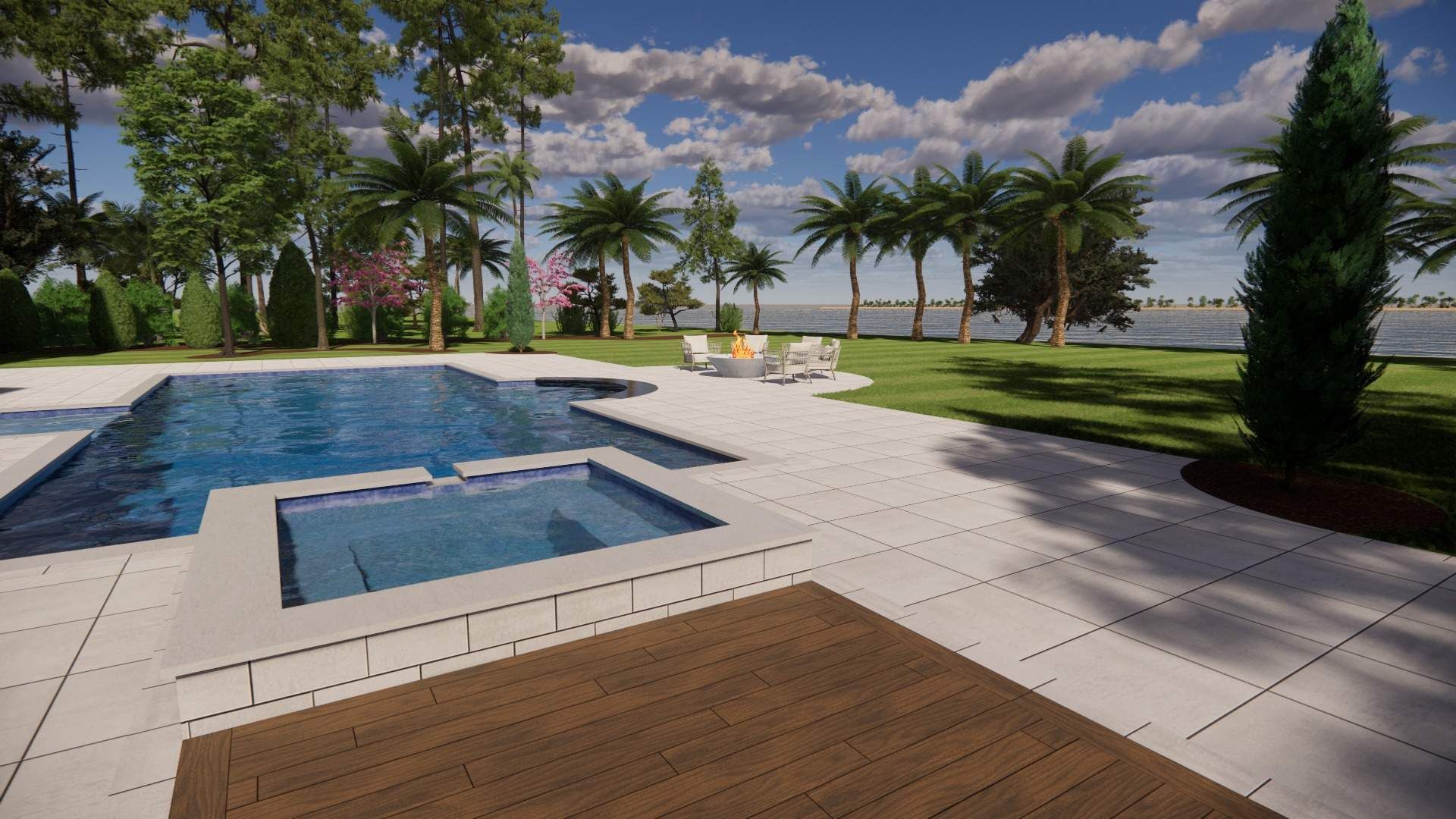Retaining Walls: Effective Practical Solutions for Sloped Lots

Retaining Walls: Effective Practical Solutions for Sloped Lots
When you have a sloped lot, a retaining wall is a great answer. Retaining walls hold back soil and create flat areas on your property. They can also add beauty and value to your landscape. In Hilton Head, where the land can be uneven, these walls are popular among homeowners.
This guide will share how retaining walls work, their types, benefits, and tips for building and caring for them.
Key Takeaways
- Retaining walls prevent soil erosion and create usable space.
- There are various types like stone, wooden, and concrete walls.
- Proper design and construction are vital for safety and durability.
- Local climate and soil conditions matter in choosing materials.
- Maintenance helps your wall last longer and look good.
For additional insights into how to enhance your landscaping, you can explore strategies for creating outdoor living spaces that complement your new retaining wall.
What is a Retaining Wall?
A retaining wall is a structure that holds back soil. This wall creates a flat space on a sloped lot. It keeps the ground from sliding down. This is especially important in places like Hilton Head, where rain can wash away soil. With a retaining wall, you can use your yard for gardens, patios, or play areas.
Why Build a Retaining Wall?
There are many reasons folks decide to build a retaining wall:
Prevent Soil Erosion
In areas with steep slopes, rain can cause soil to wash away. This makes your yard look bad and can damage plants. A retaining wall stops this from happening.
Create Usable Space
A retaining wall can make a flat area in your yard. You can use this space for outdoor furniture, gardens, or even a fire pit. It changes how you can enjoy your yard.
Improve Aesthetics
A well-designed retaining wall can make your yard look nicer. You can choose materials that match your home or other landscaping features. This adds beauty to your outdoor space.
Increase Property Value
Adding a retaining wall can raise the value of your home. Buyers see a well-kept yard as an extra perk. This means you may get more money when you sell.
Types of Retaining Walls
There are different kinds of retaining walls. Each type is good for certain situations.
Gravity Walls
Gravity walls rely on their weight to hold back soil. They are usually thick and made from heavy materials like concrete or stone. This type is common in many residential areas.
Cantilever Walls
Cantilever walls are L-shaped. They have a base that extends into the soil. This design helps them hold back more soil with less material. They work well for taller walls.
Sheet Pile Walls
Sheet pile walls are made of long, thin sheets driven into the ground. They are great for soft soils and when space is tight. These walls can be made from steel, vinyl, or wood.
Reinforced Walls
Reinforced walls have extra support, like steel rods or cables. This type is used for very tall walls to prevent them from failing.
Type of Retaining Wall Best Use Material Options Height Limit
- Gravity Walls Short to medium height Concrete, stone Up to 10 feet
- Cantilever Walls Medium to tall heights Reinforced concrete Up to 20 feet
- Sheet Pile Walls Tight spaces Steel, wood, vinyl Variable
- Reinforced Walls Very tall structures Concrete with steel rods Above 20 feet
Choosing the Right Materials
The materials you choose for your retaining wall matter. Here are some popular options:
Concrete
Concrete is strong and lasts a long time. It can be poured into different shapes, making it adaptable for various designs. It’s also easy to paint or stain.
Stone
Natural stone looks great and blends well with outdoor landscapes. It can be more expensive, but many find it worth the cost for its beauty.
Wood
Wood is a cheaper option and offers a natural look. However, it may not last as long as stone or concrete, especially in wet conditions.
Brick
Brick has a classic look and is strong. It can be used to create beautiful patterns. However, it can be heavy and may require a solid foundation.
Steps to Building a Retaining Wall
Building a retaining wall takes planning. Here’s how to do it.
Step 1: Design Your Wall
Start by drawing a plan. Think about the height and length of your wall. Make sure to include drainage to prevent water buildup.
Step 2: Gather Materials
Collect all the materials you need. This includes the main material for the wall, tools, and drainage pipes.
Step 3: Prepare the Site
Clear the area where you will build the wall. Remove rocks, grass, and other debris. Make sure the ground is level.
Step 4: Build the Wall
Begin laying the first layer of your wall. This layer must be flat and level. Add more layers, making sure each one is secure. Check that the wall is straight and stable.
Step 5: Add Drainage
To help water flow away from the wall, install drainage pipes behind it. This helps prevent buildup of water, which can weaken the wall.
Step 6: Finish the Top
Once the wall is built, you may want to add a capstone or finish the top with soil and plants. This adds a nice touch to your wall.
- Consider local regulations regarding the height and materials for retaining walls.
- Ensure you have the proper permits before beginning construction.
- Consult with professionals for complex designs or taller walls.
Maintenance Tips for Retaining Walls
To keep your retaining wall looking good and working well, follow these tips:
Check for Cracks
Look for any cracks or damage to the wall. Fix any issues right away to prevent them from getting worse.
Clean the Area
Keep the area around the wall clean. Remove weeds, leaves, and debris that can hold moisture against the wall.
Inspect Drainage
Make sure the drainage system is working. Clear any blockages to ensure water can flow away from the wall.
Replenish Soil
Sometimes the soil behind the wall can settle. You may need to add more soil to keep it level. This prevents pressure on the wall.
Maintenance Task Frequency Tools Required Purpose
- Inspect for Cracks Bi-annually Visual inspection Prevent structural failure
- Clean the Area Monthly Rake, broom Prevent moisture buildup
- Check Drainage Quarterly Garden hose, shovel Ensure proper water flow
- Replenish Soil Annually Shovel, topsoil Maintain wall stability
Local Considerations for Hilton Head
In Hilton Head, the warm, humid climate can affect how a retaining wall performs. Here are some local tips:
Use Proper Materials
Choose materials that withstand moisture. Stone and concrete are great options as they resist water damage.
Plan for Heavy Rain
Hilton Head can see heavy rain. Ensure your retaining wall has a good drainage system to handle this. This will help protect against flooding and erosion.
Consider Local Wildlife
In the Hilton Head area, consider local wildlife. A retaining wall can create shelter for animals. Use materials that do not harm local species.
Before you begin your project, consider consulting with professionals who specialize in landscaping in coastal regions, as they can provide insights specific to Hilton Head’s unique environment.
Conclusion
Retaining walls are practical solutions for sloped lots. They prevent soil erosion, create usable space, and increase property value. Choosing the right materials and design can make all the difference. Take care of your wall, and it will serve you well for many years.
By understanding the different types of walls and how they work, you can decide what is best for your yard. Whether you want a beautiful garden or a patio, a retaining wall can help you achieve your goals. Consider the local climate and conditions to ensure a successful project.
If you are ready to enhance your outdoor space with a retaining wall, contact Hilton Head Landscapes today. Our team is here to help you design and build the perfect wall for your yard. Together, we can create a beautiful and functional outdoor area for you to enjoy.



